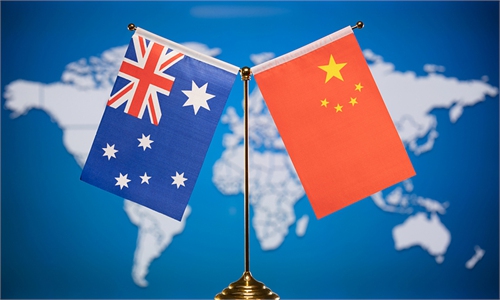
The China Clothing Textile Accessories Expo 2022 held in Melbourne from November 15 to 17, 2022 Photo: Courtesy of CCCT
Chinese and Australian companies see a stronger potential for cooperation in textiles, a major sector in bilateral trade, with a good number of deals signed at the China Clothing Textile Accessories Expo 2022 held in Melbourne from Tuesday to Thursday.
During the three-day expo, co-hosted by the China Chamber of Commerce for Import and Export of Textiles (CCCT) and Jiangsu Department of Commerce, 152 enterprises participated. The event drew up to 2,810 professional visitors, mostly Australian clients, during the first two days, CCCT said.
Judging from the active participation of visitors who attended the expo and from the feedback from exhibitors, the event is deemed a success, Cao Jiachang, the chairman of the CCCT, told the Global Times.
Many deals were clinched during the expo, with more expected to follow. For example, a group based in Shaoxing, East China's Zhejiang Province, a textile industry hub, signed deals worth a total value of about $6.5 million during the first day.
Ma Ying, general manager of HBT Garment, a domestic fashion and clothing company, was among the most active participants of the event.
As in previous sessions, Ma held many talks with Australian clients about possible deals. Most of the clients have been Ma's partners for years. While they didn't meet for three years due to epidemic, it didn't stop them from agreeing on orders, which Ma said shows the trust of Australian clients in China-made quality products.
"Chinese textile products have gained popularity among Australians, not only because we are leading the world in the innovation and usage of carbon-neutral and recyclable fabrics, but also because of the complete supply chain and efficient business operations in China, which is more competitive than many other countries," Ma said.
Strained bilateral relations will thaw following high-level meetings at the G20 Summit in Indonesia.
Frequent high-level interactions between the two countries have brought a significant change from the stalemate that has been in place since 2019, experts said.
"It marks a 'coming out of the cold' between Beijing and Canberra, as both sides have expressed their willingness to improve relations through dialogue," Chen Hong, president of the Chinese Association of Australian Studies, told the Global Times.
"China-Australia relations are stable and improving after falling to a low point, which gives strong confidence to the economic and trade circles of the two countries," Cao said.
Australia, with its vast land and sparse population, is a net importer and consumer of labor-intensive products. For example, Australia imports more than $10 billion of textile and clothing products every year. China is its largest source, accounting for about 60 percent of the total, much higher than China's 38-percent global market share by value, Cao said.
The trend didn't change much despite the pandemic. In 2021, Australia imported $6.82 billion worth of textile and apparel products from China, a year-on-year increase of 13.3 percent.
In the first three quarters of this year, Australia's imports from China stood at $6.02 billion, up about 22 percent year-on-year.
It is expected that this year's imports will far exceed those of 2021, Cao said.
Australia is also a resource-based country, with wool and cotton, the raw materials for textiles and clothing, among its main export commodities, which Cao said shows the high complementarity of the two countries in trade.
"It is always easier to break than to make. But as long as both sides are genuinely motivated to repair the relationship, significant improvement can be made quickly," Chen said.
With 50 years of mutually beneficial partnership, China-Australia relations are mature and resilient enough to recover quickly, the expert noted.

